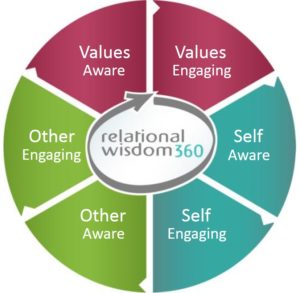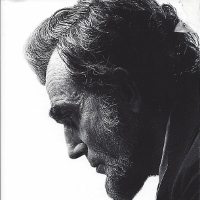Cinderella Man is one of my favorite movies, largely because it stars Russell Crowe, one of my favorite actors. The story is based on the life of James J. Braddock. Once a successful heavyweight boxer, Braddock was reduced to poverty by a broken hand and the Great Depression. After losing their home, he and his family were forced to live in a rundown, one-room basement apartment. Like so many other men, he went out every morning desperately looking for work so he could bring his wife enough money to buy food for the next meal.
In the clip you will watch, he is returning home empty-handed. He knows his family will go to bed hungry once again. He is greeted by even worse news: his son has been stealing food. In spite of all the frustrations he must be feeling , he responds to his son with remarkable relational wisdom.
As you watch this scene, pay careful attention to the relational dynamics and emotional cues. Try to imagine how discouraged and powerless this man must feel. Watch Russell Crowe’s body language and posture. Listen to his tone of voice. Note his facial expressions. Pay attention to his use of pronouns. Draw on his example to improve your own ability to discern emotions, desires, and needs in yourself and others, and to respond to them in constructive ways.
As you watch this clip, be sure to click the full screen icon in the lower right corner of the movie screen so you can better see the subtle body language and emotional cues of this moving exchange. (If screen does not appear, click here.)
Debrief
If you were watching carefully, you will have noticed several excellent examples of relational wisdom. Let’s consider a few of them.

By patiently holding his tongue, he allows his son time to reveal the reasons behind his actions (other-aware). In doing so, he models one of the most appealing qualities any of us can develop: “love is patient and kind” (other-engaging).
Crowe demonstrates marvelous self-control throughout the scene. When he learned the reason for his son’s stealing, his body language revealed a deep inner agony. He looked up and down the street, suppressing a scream of anger and frustration, not at his son’s behavior, but at a world that was crushing his family and at his own inability to provide for those he loves (more self-awareness and engagement).
Crowe went from standing erect, to leaning over, to kneeling as he spoke to his son. This reduced physical intimidation and drew them closer to each other, both physically and emotionally.
More importantly, his posture physically illustrated the difference between law and grace. As he spoke “the law” to his son (“We don’t steal”), he was still above him, but when he spoke grace (“I promise we will never send you away”), he was kneeling so low that his eyes were actually beneath his son’s, persuasively communicating humility, kindness, and love (superb other-awareness and other-engagement, which continues throughout this scene).
Crowe moved smoothly from the first and second person singular (“I” and “You”) to the first person plural (“We” and “us”). In doing so, he sent the clear message, “You are not excluded from my heart or love; we are a family and we are in this together.”
His tone of voice consistently conveyed gentleness and respect. He was firm but his words were not fashioned to sting and punish. He spoke the truth directly yet kindly, reminding his son of their family’s shared values and dignity, and inviting him to reclaim his place in that circle with a simple promise. A superb illustration of an age-old proverb: “There is one whose rash words are like sword thrusts, but the tongue of the wise brings healing.”
Crowe brought healing by conclusively resolving the burning issue in his son’s heart, the fear of being sent away for lack of food. A superb demonstration of other-engagement!
Crowe choked up as he made his promise, reinforcing his words with subtle yet convincing emotional cues. He communicated love, forgiveness, and commitment with his words, tone of voice, eyes, facial expression, and posture; he used every means of communication to reach his son’s mind and heart and to reassure him of his complete restoration (compelling other-awareness and engagement).
Sensing the genuineness and safety of his father’s love and forgiveness, his son burst into tears from sheer relief and threw himself into his father’s arms. In a perfect climax, this wise and loving father embraced his son, lifted him up, and reassured him with these compassionate and redeeming words, “It’s OK, kid. You got a little scared. I understand.”
These are words that a son will remember and cherish to the day he dies. I know, because my father spoke almost these exact words to me when I was ten years old and just as scared as the boy in this scene. Those words ring in my ears to this day, reminding me of my father’s love, compassion, and wisdom.
Watch and Grow
This little movie clip is only three minutes long, and yet it is packed with lessons on relational wisdom. So don’t just watch this clip; learn from it. No matter how relationally clumsy your are today, by God’s grace you can develop, little by little, the same relational skills that Russell Crowe demonstrates in this brief but life-changing interaction.
Here are some questions and exercises you can use to start this process right now (you’ll get even more from them if you discuss them with a friend or in a group).
- Practice empathy. As you reflect on what you saw in this clip, try to put yourself in the father’s place. Name every emotion you might feel as this scene unfolded.
- Now put yourself in the son’s place. What would you feel as your father comes down the stairs? As you walk to the grocer’s in complete silence? As you leave the store and start back toward home? As your father enables you to share your deep fears? As he kneels in front of you? As he embraces you and lifts you in his arms?
- Practice reading body language. Watch the clip again with the sound off. Note all of the emotions that both the father and son communicate not with words but with their eyes, facial expressions, posture, and body language.
- Which of the father’s relational skills would you most like to develop? Begin praying on a daily basis for God to help you put off your old ways and to put on this new way of relating to others.
Watch with Wisdom
As would be expected in a story about boxing, this movie contains a great deal of physical violence, as well as other elements that would be unsuitable for young children. For a detailed review of its content, see Plugged In or IMDb.
— Ken Sande
Permission to distribute: Please feel free to download, print, or electronically share this message in its entirety for non-commercial purposes with as many people as you like.
© 2013 Ken Sande
Get this from a friend? Subscribe now!




